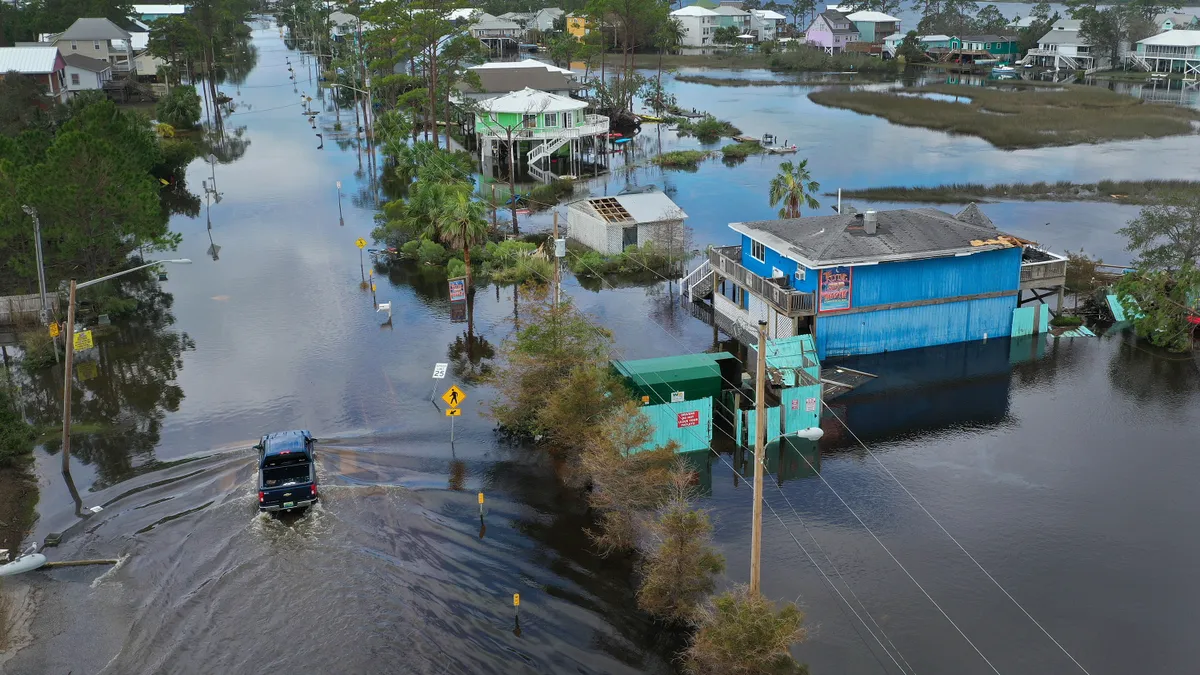Dive Brief:
- The Biden administration is doubling federal funding to $1 billion this year for state and local pre-disaster mitigation efforts through a nascent Federal Emergency Management Agency (FEMA) program meant to "categorically shift the federal focus from reactive disaster spending and toward research-supported, proactive investment in community resilience," according to an announcement this week.
- FEMA’s Pre-Disaster Building Resilient Infrastructure and Communities program (BRIC) has yet to announce recipients from its first application cycle, which ran September through January. It made $500 million available for projects that mitigate risk, incorporate nature-based solutions, and support public infrastructure and adoption and enforcement of modern building codes. But the agency has revealed that requests from states and territories totaled more than $3.6 billion.
- In addition to noting the added funding support for FEMA, Monday's announcement outlines new steps to incorporate resilience focuses across a range of federal agencies. Examples include the Department of Energy supporting more microgrid technologies and the Department of Transportation promoting "future-proofed" transportation investments.
Dive Insight:
Community resilience and preparedness are increasingly important to the national bottom line. Last year the U.S. experienced a record-breaking 22 separate billion-dollar weather and climate disasters whose damages totaled $95 billion, according to the National Oceanic and Atmospheric Administration (NOAA).
The Biden administration's announcement of new measures to put resilience at the forefront comes during a week when Lake Charles, Louisiana, is still cleaning up from storm-related flooding prior to what NOAA anticipates will be "another above-normal" hurricane season. Meanwhile, California communities continue to face a dangerous wildfire season amid drought and recently passed a $536 million wildfires package that's in part focused on resilience.
It could be years, though, before the $1 billion has any impact in stymieing destruction from extreme weather events and other climate change impacts, according to Resilient Cities Catalyst (RCC) founding principals Michael Berkowitz and Jeb Brugmann.
"The question is, will this even help next year?" said Berkowitz. "To truly reduce vulnerabilities from these types of hazards — this is a generational undertaking."
Brugmann also noted that, given the numerous threats communities are up against, taxpayer-dollar-supported solutions must have multiple benefits.
"While applauding the effort to fast-track a billion dollars to prepare for the upcoming [climate threat season], what I would argue is that thought needs to be given to how that money can be used by localities to do project design and to build out capacity to understand what resilience building is and get out of this operational silo situation," he said.
RCC sought to better address some of those challenges with the formation of the California Resilience Partnership earlier this year, which aims to improve collaboration between different levels of government and stakeholders. RCC leaders say they have been in discussions to set up similar programs in Louisiana and New Jersey.
Although FEMA has yet to announce who is receiving funds from the initial tranche of $500 million, the agency disclosed it received 980 applications for BRIC funding requests in fiscal year 2020, "the highest number received to date."
Pre-disaster mitigation programs have faced a "yo-yo of funding" over the years, but FEMA could plan more robustly and further out if the Biden administration were to further multiply the funds it transfers to BRIC, said Natural Resources Defense Council's (NRDC) Rob Moore, director of its water and climate team.
In addition to maximizing funding to BRIC, Moore said, other resilience priorities NRDC has been raising to the administration include implementing reforms to the decades-old National Flood Insurance Program and harnessing the power of natural defenses such as wetlands and floodplains.












